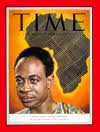“They say we have been here for 60,000 years, but it is much longer. We have been here since the time before time begin. We have come directly out of the Dreamtime of the Creative Ancestors. We have lived and kept the earth as it was on the First Day.”
(Anonymous Aboriginal Tribal Elder)
June 21 was chosen because of the cultural significance of the summer solstice, the first day of summer and longest day of the year. Many aboriginal groups mark the date as a time to celebrate their heritage.
“On June 21st, this year and every year, Canada will honour the native peoples who first brought humanity to this great land,” said Leblanc. “And may the first peoples of our past always be full and proud partners in our future.”
[extracted from http://www.cbc.ca/news/background/aboriginals/aboriginalday.html ]
The day’s proclamation was an event 14 years in the making.
I have been to the end of the earth. 

I have been to the end of the waters.
I have been to the end of the sky.
I have been to the end of the mountains.
I have found none that are not my friends.
Navajo proverb
A brief history of National Aboriginal Day:
1982: National Indian Brotherhood (now the Assembly of First Nations) calls for the creation of National Aboriginal Solidarity Day on June 21.
1990: Quebec legislature recognizes June 21 as a day to celebrate aboriginal culture.
1995: The Royal Commission on Aboriginal Peoples recommends the designation of a National First Peoples Day. The Sacred Assembly, a national conference of aboriginal and non-aboriginal people chaired by Elijah Harper, calls for a national holiday to celebrate the contributions of Canada’s Aboriginal Peoples.
1996: June 13: Gov. Gen. Roméo LeBlanc declares June 21 as National Aboriginal Day after consultations with various aboriginal groups. The inaugural day is celebrated with events from coast to coast to coast.
Since then, the day has been celebrated in both small venues – such as elementary schools – and large venues alike.
http://6nsolidarity.wordpress.com/
In 2005, two of Canada’s big banks hosted events at their downtown Toronto offices to mark the day. Also that year, in Iqaluit, the day was marked in a special way – 11 Inuit men and women made up the graduating class of the Akitsiraq law school, a one-time co-operative venture between the University of Victoria and Nunavut Arctic College meant to boost the number of lawyers in the North. Overnight, Nunavut’s population of Inuit lawyers grew from one – Premier Paul Okalik – to 12.
was marked in a special way – 11 Inuit men and women made up the graduating class of the Akitsiraq law school, a one-time co-operative venture between the University of Victoria and Nunavut Arctic College meant to boost the number of lawyers in the North. Overnight, Nunavut’s population of Inuit lawyers grew from one – Premier Paul Okalik – to 12.
To mark the 10th anniversary of National Aboriginal Day, dozens of formal and informal events were planned across the country, ranging from sunrise ceremonies at Nathan Phillips Square in Toronto to aboriginal art workshops at the Canadian Museum of Civilization in Gatineau, Que. There’s also a conference on Aboriginal contributions to the Canadian military experience at Royal Military College in Kingston.
The day kicks off the beginning of the annual 11-day Celebrate Canada! festivities held from June 21 to July 1. The festivities also include St-Jean Baptiste Day (June 24), Canadian Multiculturalism Day (June 27) and Canada Day (July 1).
FAQs on aboriginal Canadians:
http://friendsofsixnations.bravehost.com/
How many aboriginal Canadians are there in Canada?
In 2001, 3.4 per cent of Canadians were aboriginal, a total of 976,305 people. Of those, 62 per cent were North American Indian, about 30 per cent were Métis, and 5 per cent were Inuit.
How many live on and off reserves?
About seven out of 10 aboriginal people live off a reserve, according to the 2001 census, with almost a third of those living in large cities. Nearly 30 per cent live on reserves.
Where do aboriginal people live in Canada?
In 2001, the provinces with the largest aboriginal populations were Ontario, British Columbia, Alberta, Manitoba and Saskatchewan.
Winnipeg had the largest North American Indian population among census metropolitan areas, with 22,955. Alberta had the highest proportion of Métis, at 23 per cent. And half of Canada’s Inuit population lives in Nunavut.
http://sisis.nativeweb.org/index.html
What are the projections for Canada’s aboriginal population?
By 2017, there will be an estimated 1.39 million to 1.43 million aboriginal persons, according to Statistics Canada. Aboriginals would represent 4.1 per cent of the Canadian population, up from 3.4 per cent in 2001.
Canada’s aboriginal population is expected to grow by 1.8 per cent annually, more than twice the rate of 0.7 per cent for the general population. The aboriginal birth rate is 1.5 times the Canadian birth rate.
“Oh, Eagle, come with wings outspread in sunny skies.
Oh, Eagle, come and bring us peace, thy gentle peace.
Oh, Eagle, come and give new life to us who pray.”
Pawnee Prayer
ase, ase
ase, ase o.
June 24: Day of Action for Indigenous Rights!
11:00AM, March start point: Queen’s Park, South Lawn
To arrange a bus ride from Ottawa to Toronto for June 24, please send your request at
http://g20.torontomobilize.org/ottawatranspo
Come MARCH with community members at the Indigenous Day of Action Against the G8/G20 on June 24th in Toronto:
http://www.defendersoftheland.org/story/179




